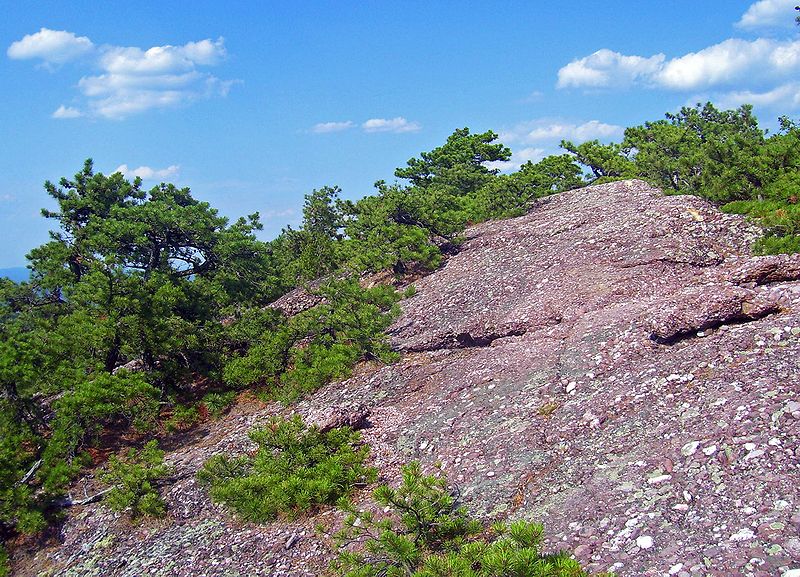Over 40% of the gold in the world is produced in the Witwatersrand of South Africa Witwatersrand is the home to some of the deepest mines in the world that either approach or exceed 13,000 feet in depth. Ancient conglomerate deposits are not limited to South Africa Timmins , Ontario
 |
| Conglomerate rock in as natural setting. Photo by Daniel Case |
Although gold was discovered in just about any type of rock that is found on Earth prospecting in quartz conglomerates is a pretty good bet. In the eastern United States New York New Jersey
There are two different ways that gold can be deposited in conglomerate. One of the ways is by direct precipitation from hydrothermal waters where it forms a primary deposit. The second way gold can be deposited in a conglomerate is as a fossilized placer deposit where the gold has eroded from ancient mountains.
 |
| Closeup of conglomerate that sometimes is called "Puddingstone." Photo ny Roy Parkhouse |
Although gold is not found in every conglomerate it is a good idea to check them all for the presence of gold especially if the quartz pebbles show any sign of staining either yellow or green. This is a sure sign that metal bearing hydrothermal waters have penetrated the conglomerate. There are several other interesting minerals found in conglomerate like uranium, thorium and rare earth metals. Conglomerates can also be the host of other metals such as iron, copper, lead and zinc.